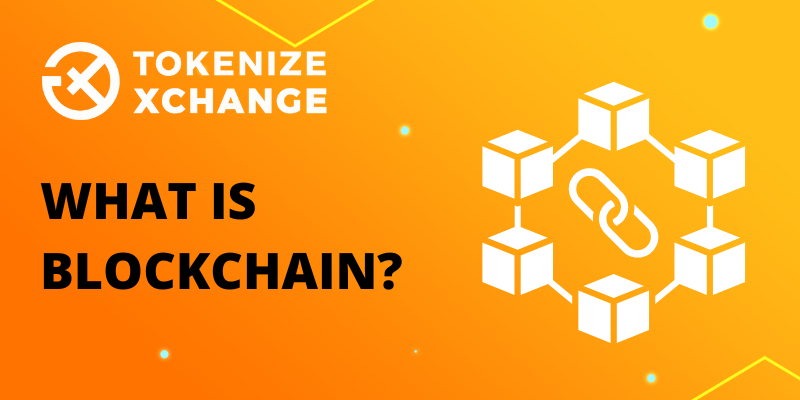Blockchain can be described as the base idea that helps us to understand how cryptocurrency works, essentially a set of connected blocks or an online, decentralized ledger. It is a shared public ledger that facilitates cryptocurrency transaction recording. Blockchain is a network of computers called nodes which all have on them the same history of transactions. So instead of one company or a database which holds all the information, now the information is spread across the whole network. Whenever a transaction occurs, the record is validated by everyone and is put in the history of transactions in that network. All the transactions are encoded using a technique called cryptography.
Using cryptography, blockchains store data in blocks that are linked together. As new data comes in, it is entered into a fresh block added to the ‘end’ of the blockchain. When the fresh block is now filled with data, it is chained to the previous block, and all the existing data is chained together in chronological order. In the case of cryptocurrency, blockchain is used in a decentralised way so that no single person or group has overall control over it. All these make blockchain very secure and protected from potential security breaches.

How does blockchain work?
A blockchain is a foundation for immutable ledgers, or records of transactions that cannot be altered, deleted, or destroyed. This is why blockchains are also known as distributed ledger technology (DLT).
What makes a blockchain so secure?
- Data entered on the blockchains is irreversible and cannot be edited
- All transaction data are permanently recorded and viewable to anyone
- The records stored in the Bitcoin blockchain (as well as most others) are encrypted. Only the owner of a record can decrypt it to reveal their identity (using a public-private key pair). As a result, users of blockchains can remain anonymous while preserving transparency.
To tamper with Bitcoin’s record of transactions, for example, all other nodes would cross-reference each other and quickly pinpoint the node with the incorrect information. This system helps to establish an exact and transparent order of events. This way, no single node within the network can alter information held within it. The feature of blockchain that allows public viewing, plus the immutable nature to change, makes it pretty much invincible to a system breakdown or hacking.
To validate new entries or records to a block, a majority of the decentralized network’s computing power would need to agree to it. To prevent bad actors from validating bad transactions or double spends, blockchains are secured by a consensus mechanism such as proof of work (PoW) or proof of stake (PoS).
The 51% attack
Let’s say a hacker wants to alter a blockchain and steal cryptocurrency from everyone else. If they were to alter their own single copy, it would no longer align with everyone else’s copy. When everyone else cross-references their copies against each other, they would see this one copy stand out, and that hacker’s version of the chain would be identified as ‘illegal’ or ‘invalid’. Therefore, it is extremely difficult to go and alter the contents of the block unless a majority of the network (in this case, more than 50%) has reached a consensus to do so. Such an attack would also require an immense amount of money and resources because they would need to redo all the blocks that have different time stamps and hash codes. Each block contains its own hash, along with the hash of the block before it, as well as the previously mentioned time stamp. Hash codes are created by a mathematical function that turns digital information into a string of numbers and letters. If that information is edited in any way, then the hash code changes as well.
Examples of the use of blockchain
First proposed as a research project in 1991, the blockchain concept then is being known popularly for Bitcoin in 2009. Since then, the use of blockchains has exploded via the creation of various cryptocurrencies, decentralized finance (DeFi) applications, non-fungible tokens (NFTs), and smart contracts.
Today, there are more than 10,000 other cryptocurrency systems running on the blockchain. But it turns out that blockchain is a reliable way of storing data about other types of transactions as well. Some companies that have already incorporated blockchain include IBM, Walmart, Pfizer, AIG, Siemens, and Unilever.
For example, IBM has created its Food Trust blockchain to trace the journey that food products take to get to their locations. They use blockchain to track a food product’s route from its origin, through each stop it makes and delivers. If a food is found to be contaminated, then it can be traced all the way back through each stop to its origin. Not only that, but companies can also now see everything else they may have encountered, allowing the identification of the problem to occur far sooner and potentially saving lives. This is one example of blockchain in practice, but there are many other forms of blockchain implementation.
- Banking and Finance
- Healthcare
- Property records
- Supply chain, and many more
The future of blockchain
With many practical applications for the technology already being implemented and explored, blockchain is making a name for itself in no small part because of bitcoin and cryptocurrency. As a buzzword on the tongue of every investor in the nation, blockchain stands to make business and government operations more accurate, efficient, secure, and cheap, with fewer middlemen.
As the world is embracing the further extension and development of blockchain, it’s no longer a question of if legacy companies will catch on to the technology—it’s a question of when. Today, we see a proliferation of NFTs and the tokenization of assets. It is expected to see the time in the near future will be an important period of growth for blockchain.